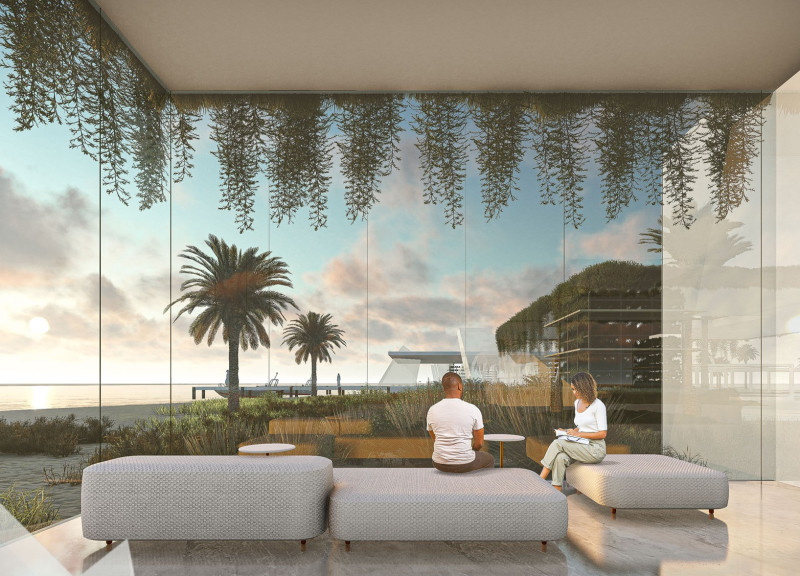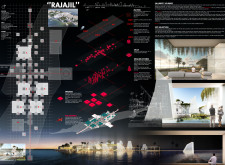5 key facts about this project
The project utilizes carefully selected materials to reinforce its design intentions. The integration of glass, concrete, natural wood, and stone serves multiple purposes—from structural integrity to creating a connection with the surrounding landscape. Each element within “RAJAJIL” is designed to evoke tranquility and reflection, embodying the therapeutic intent behind its creation.
Healing Spaces and Community Connectivity
A distinctive feature of “RAJAJIL” is the concept of the Healing Stones—architectural elements that act as both functional spaces and symbolic representation of healing. These structures are dispersed throughout the site and provide areas for various therapeutic activities, community gatherings, and relaxation. The Healing Stones are arranged in a grid-like configuration that promotes easy navigation and interaction among users.
The project prioritizes light and water elements, with reflective pools enhancing the sensory experience and integrating the natural surroundings. By leveraging these natural resources, the design fosters a calming atmosphere conducive to healing and reflection. Consequently, this fosters not only individual well-being but also contributes to enhancing community ties through shared experiences.
Integration of Natural and Built Environments
“RAJAJIL” demonstrates a seamless integration of architectural design with the existing environment. The orientation of the structures is strategically planned to capture maximum natural light and breezes, emphasizing the connection between interior spaces and the external landscape. This thoughtful engagement with the site context highlights the importance of sustainability in architecture, allowing the project to harmonize with its surrounding ecosystem.
Furthermore, the selection of durable and sustainable materials indicates a commitment to environmental responsibility. The use of natural wood and stone not only adds visual warmth but also reinforces the architectural narrative that emphasizes stability and healing. This alignment with natural elements is a critical aspect that differentiates “RAJAJIL” from typical architectural projects.
To explore more about the “RAJAJIL” project, including its architectural plans, sections, designs, and innovative ideas, consider reviewing the project presentation for in-depth insights. Discover how this architectural endeavor effectively merges design with the principles of well-being and community connection.























